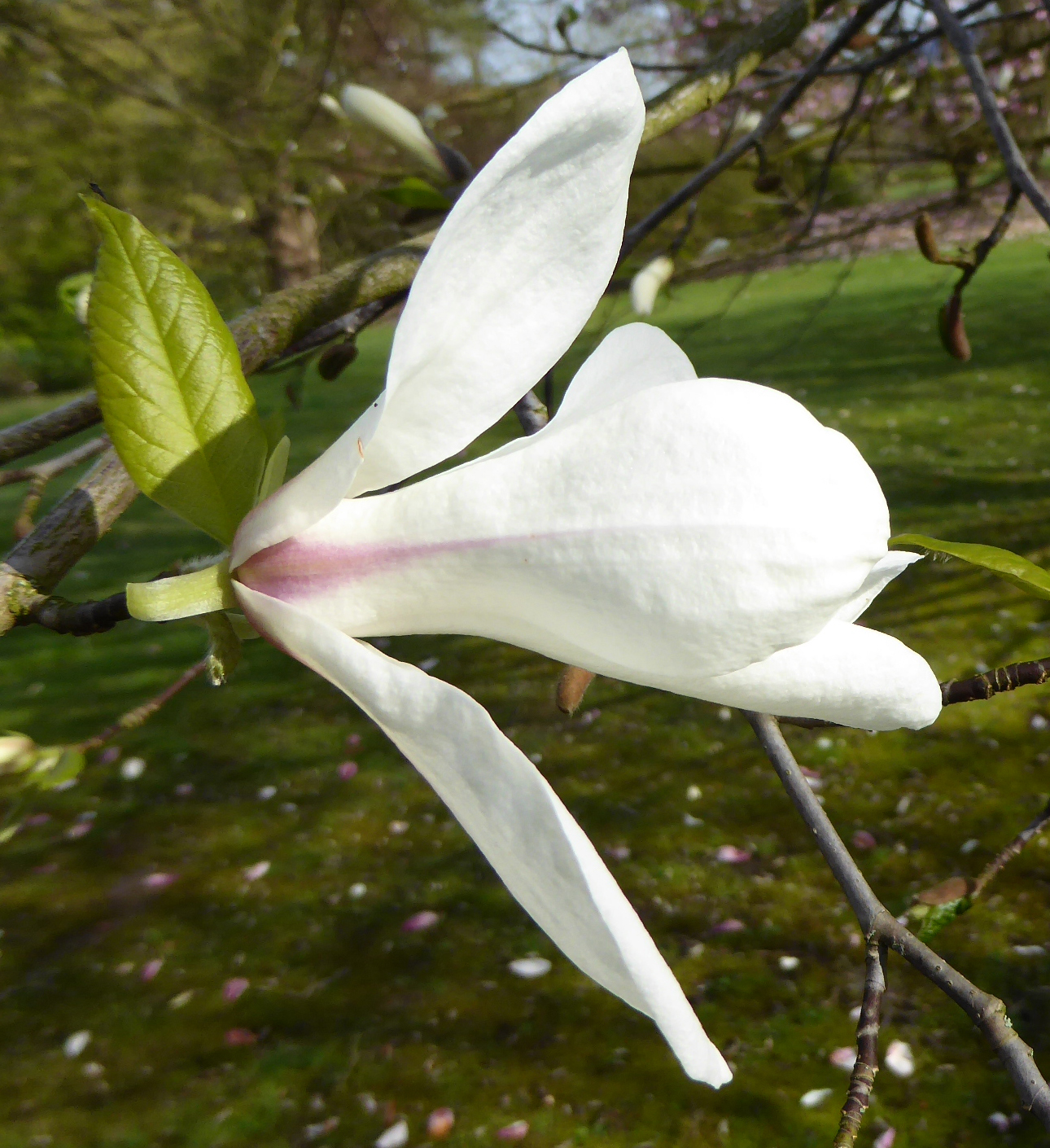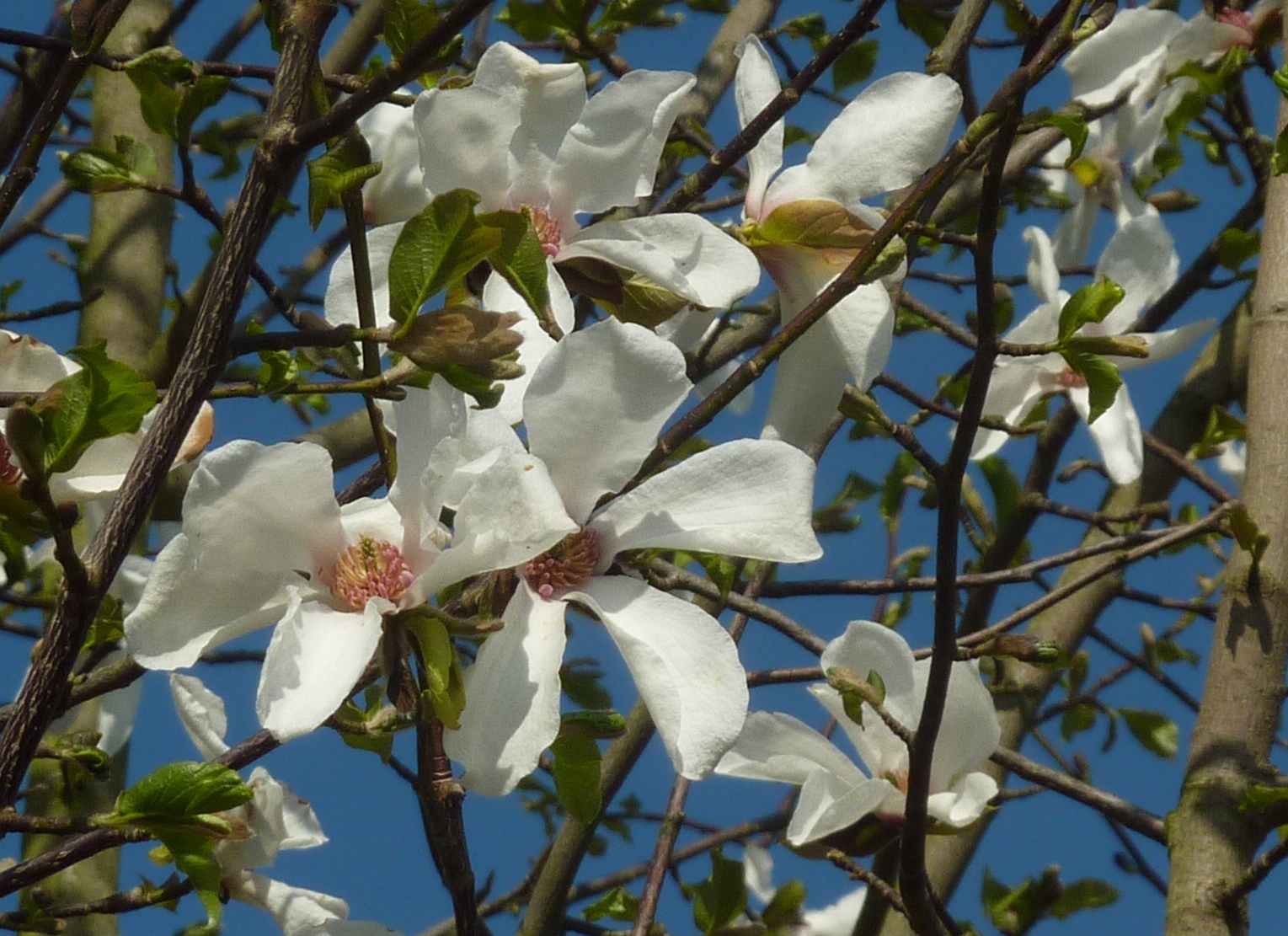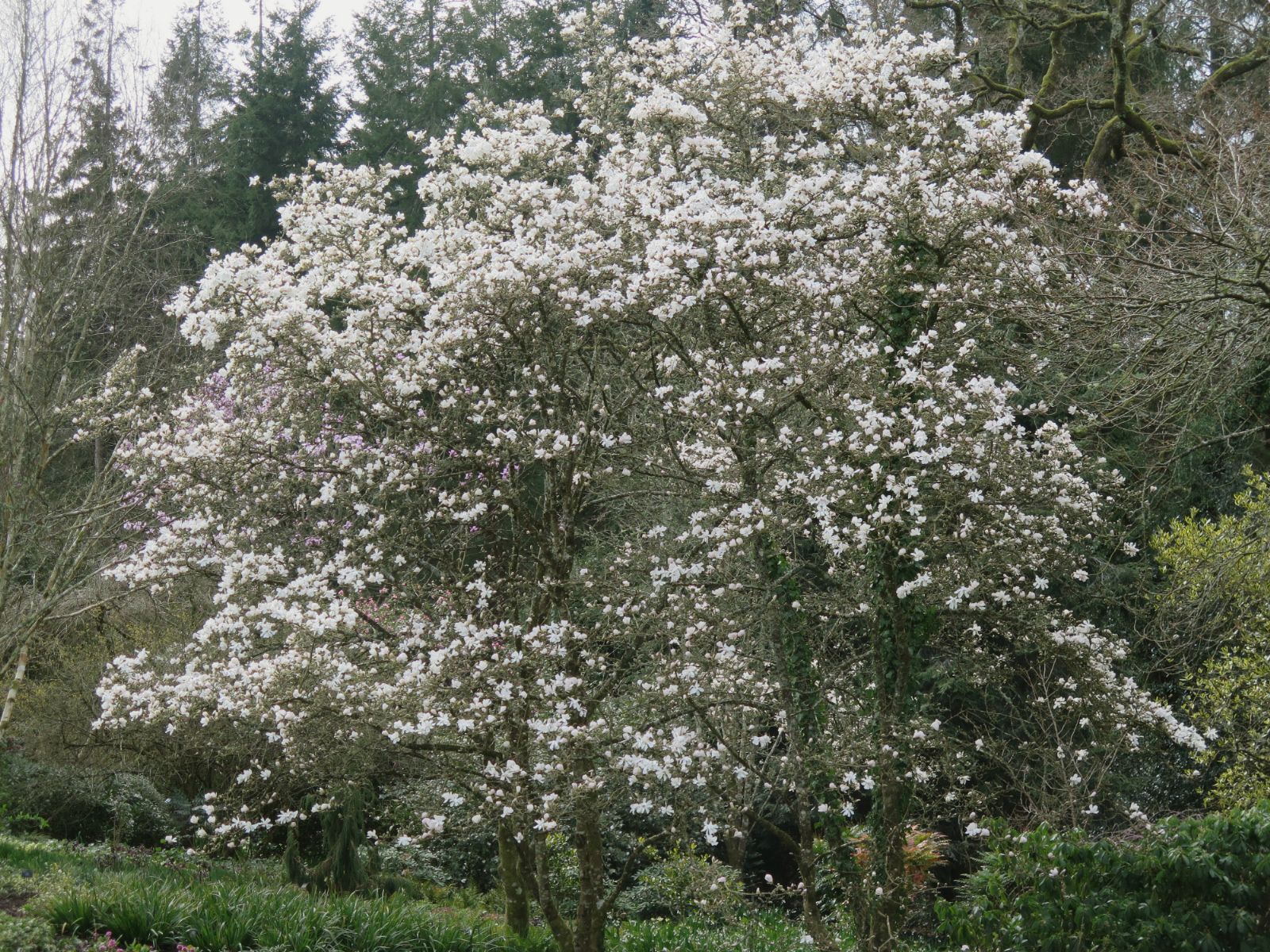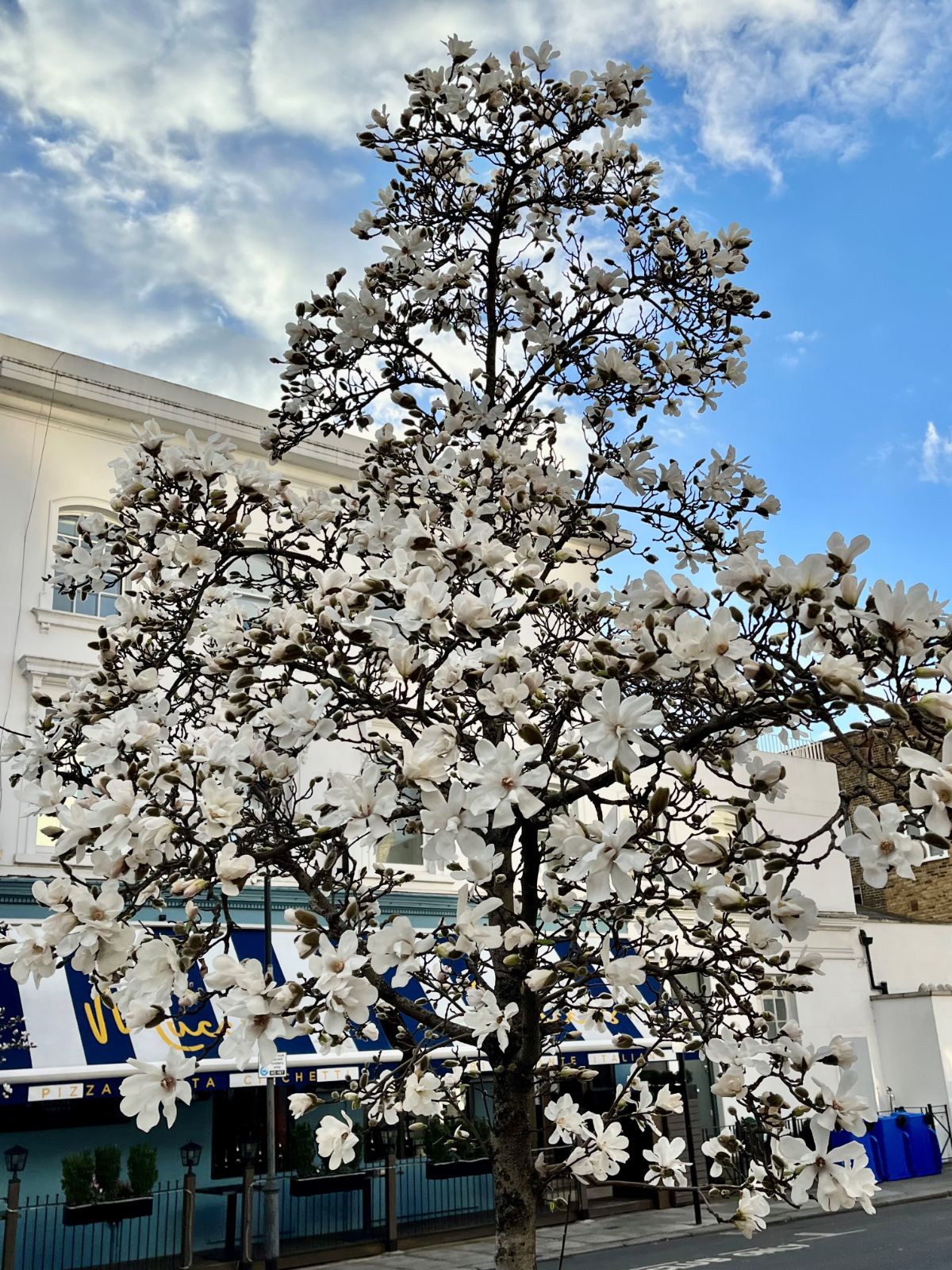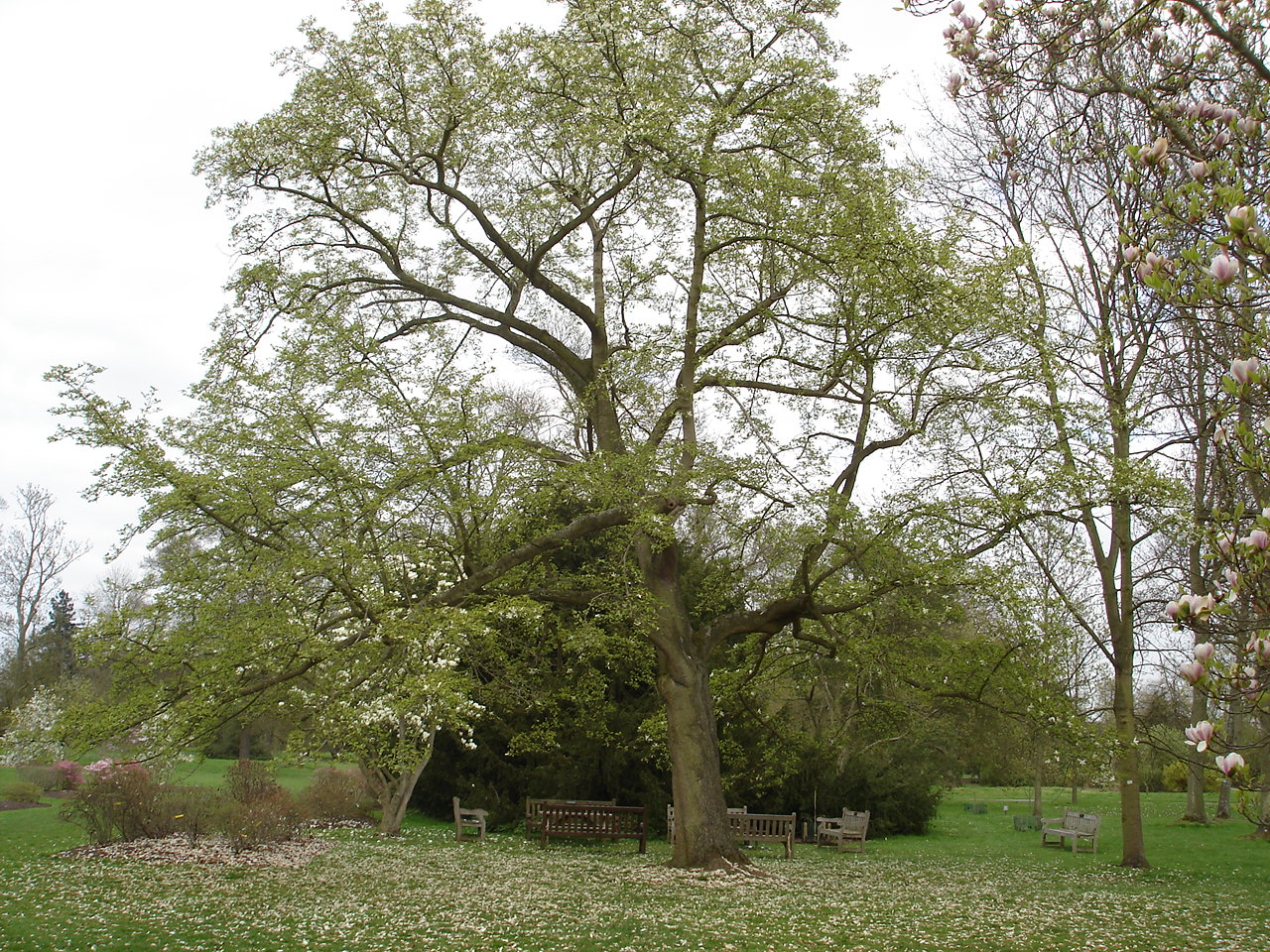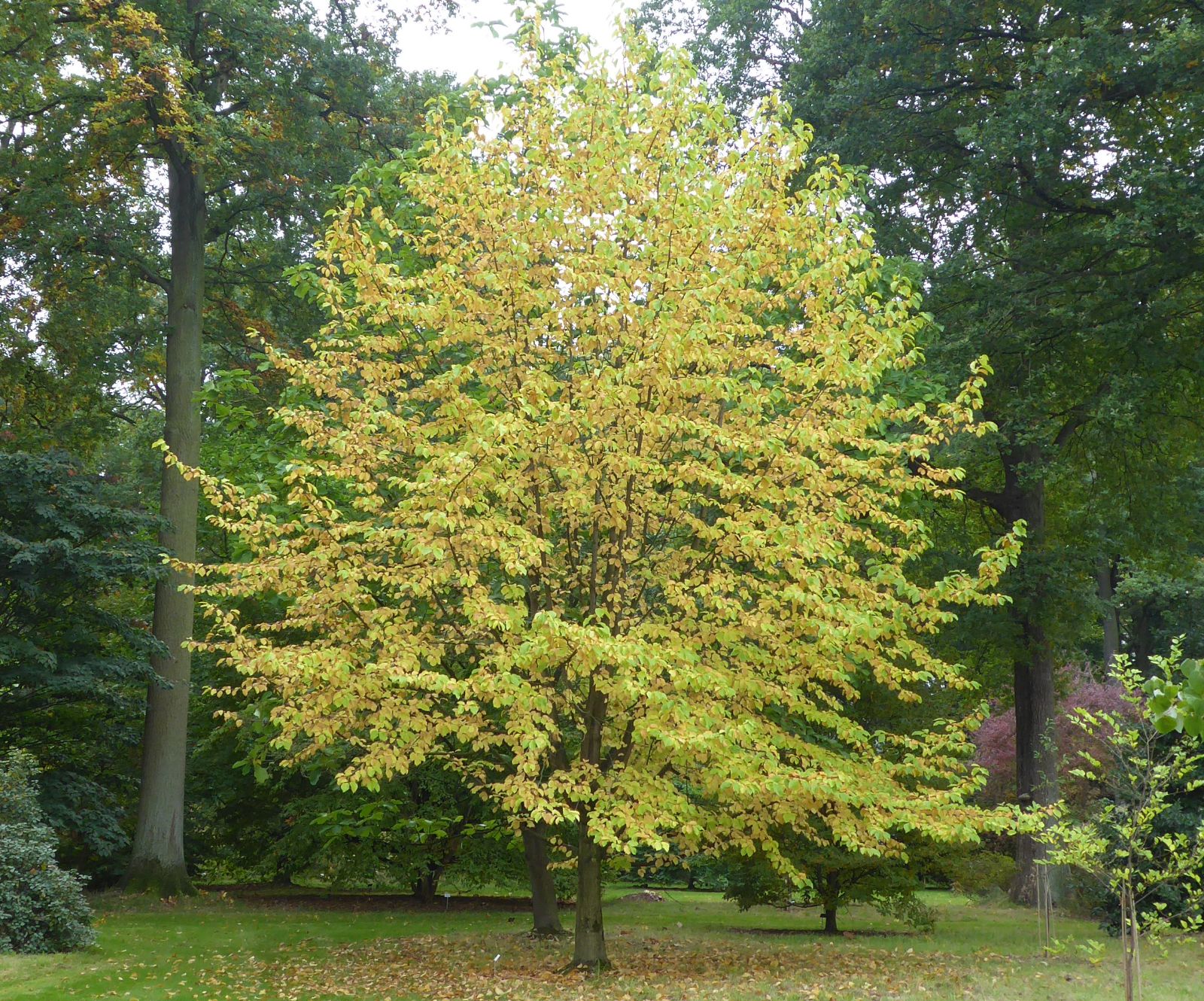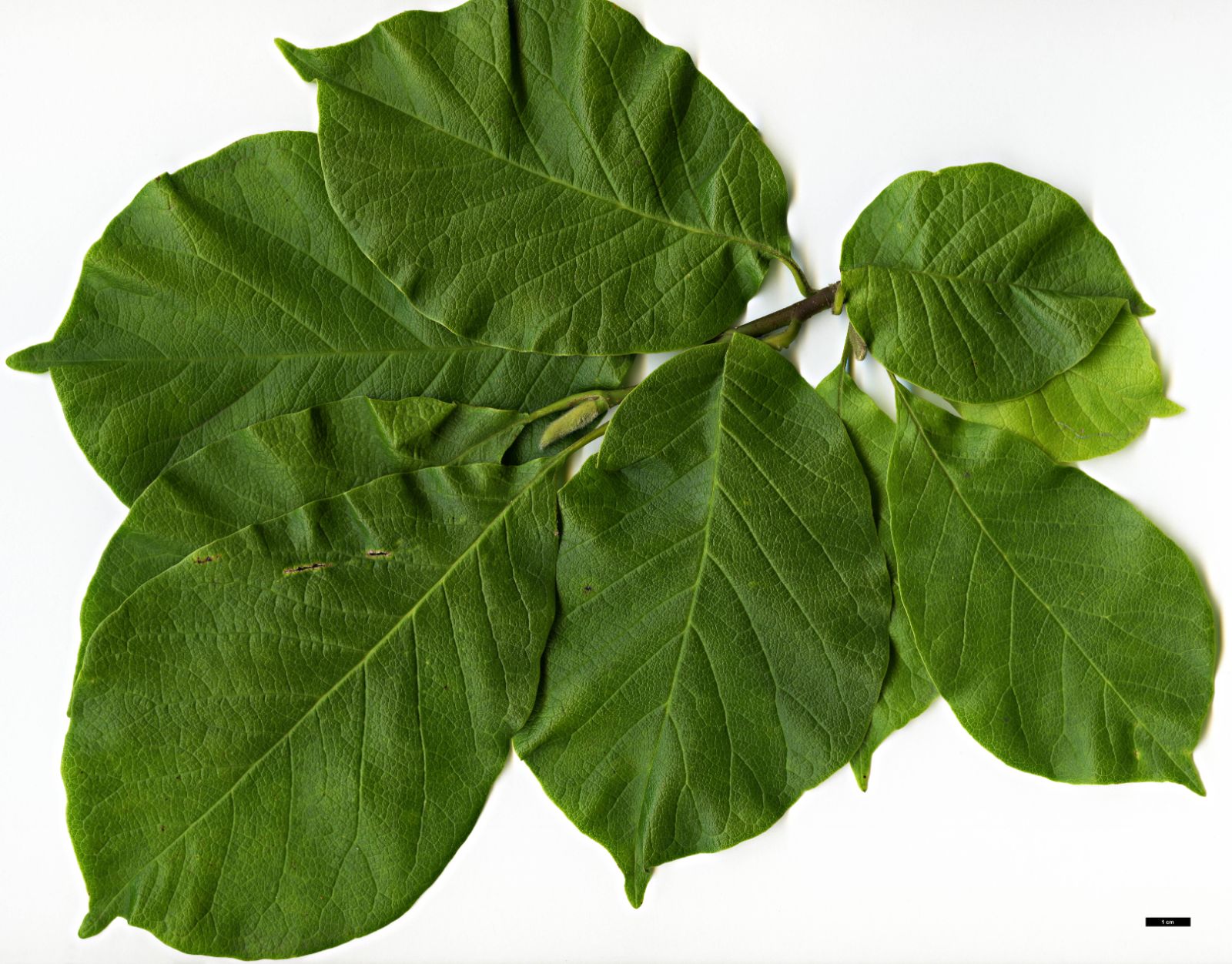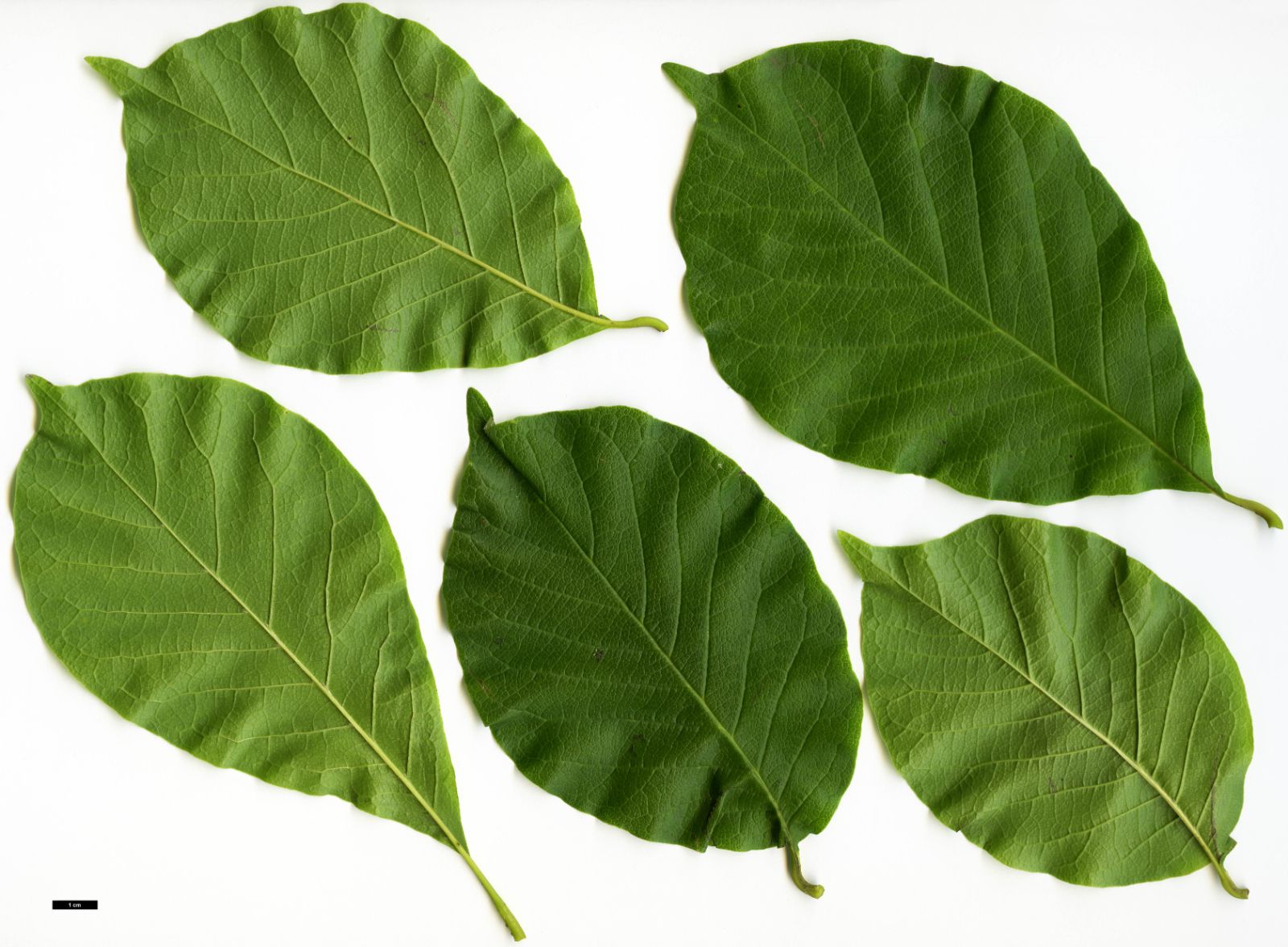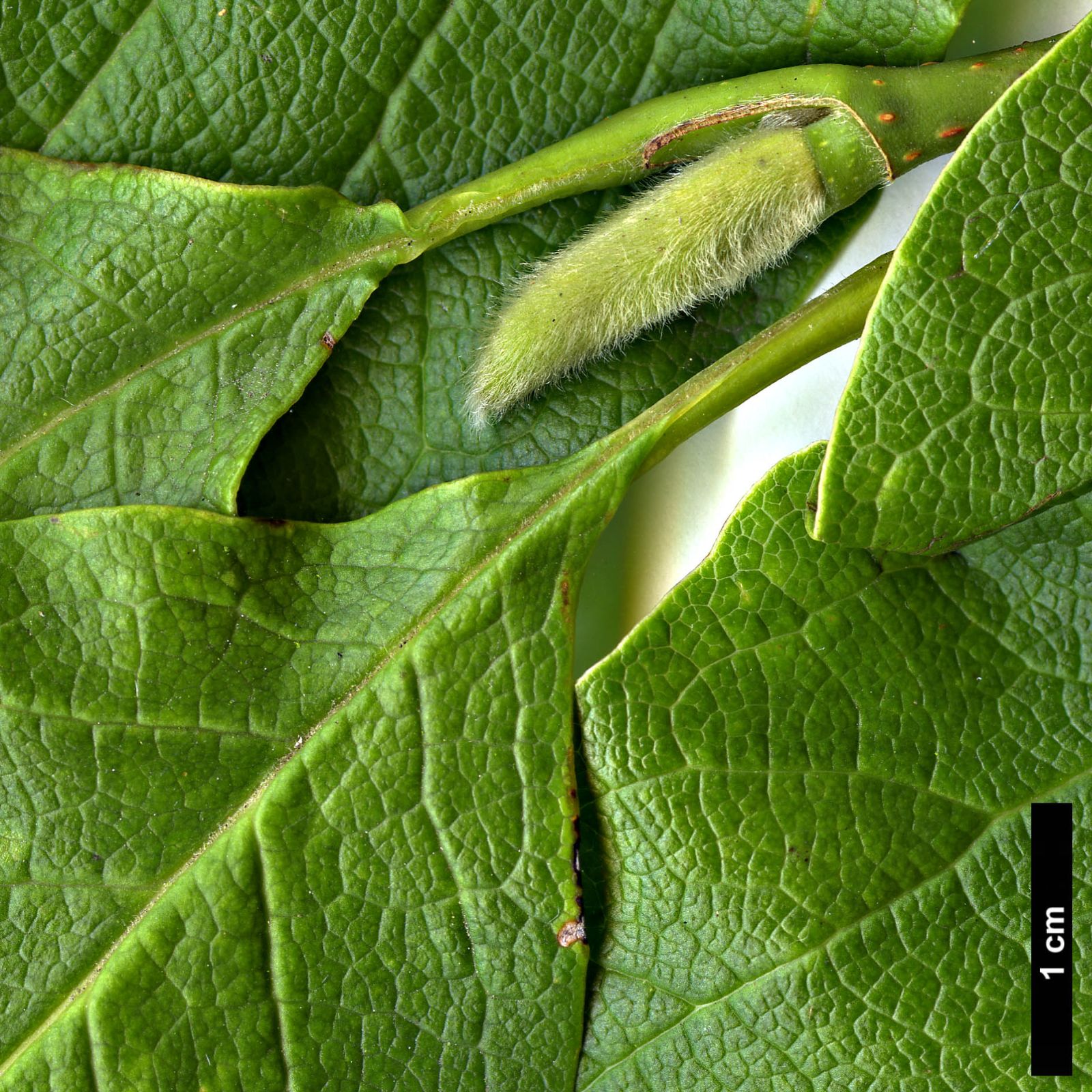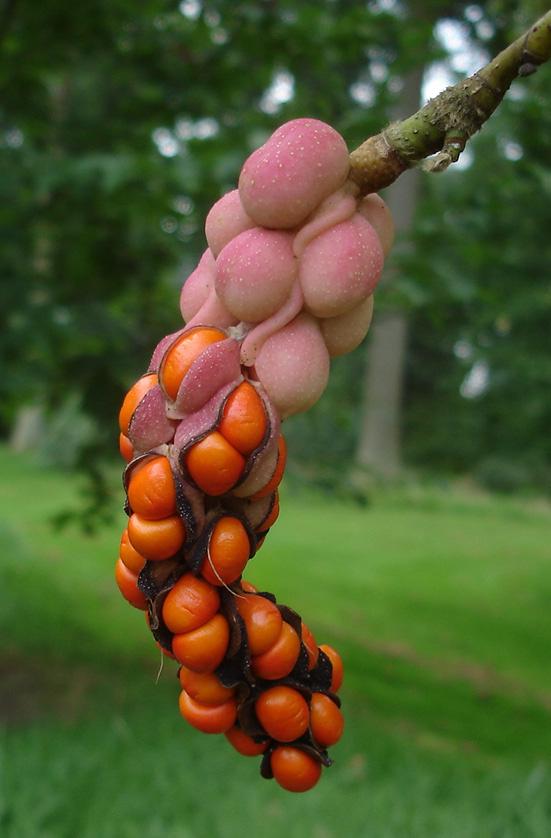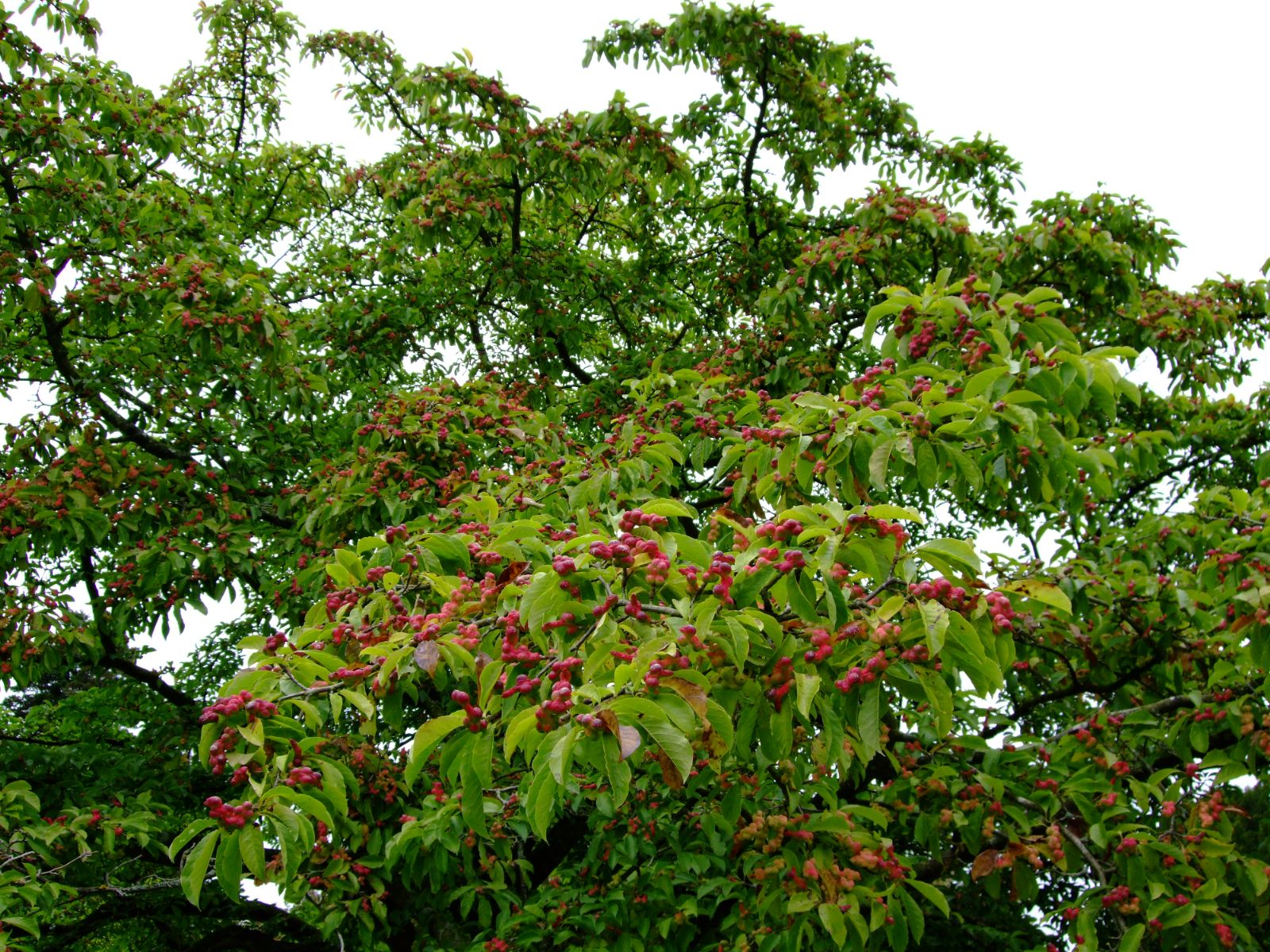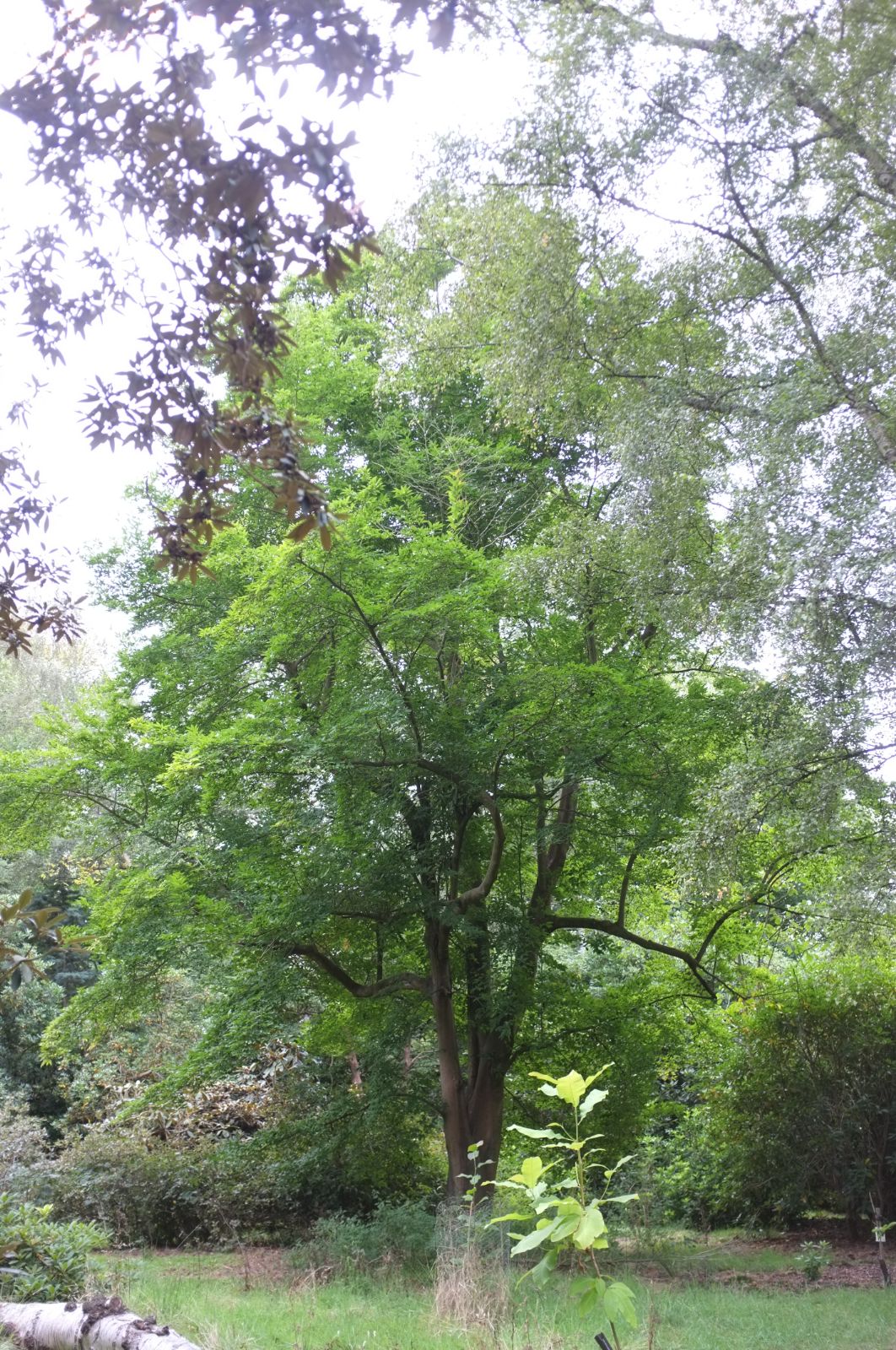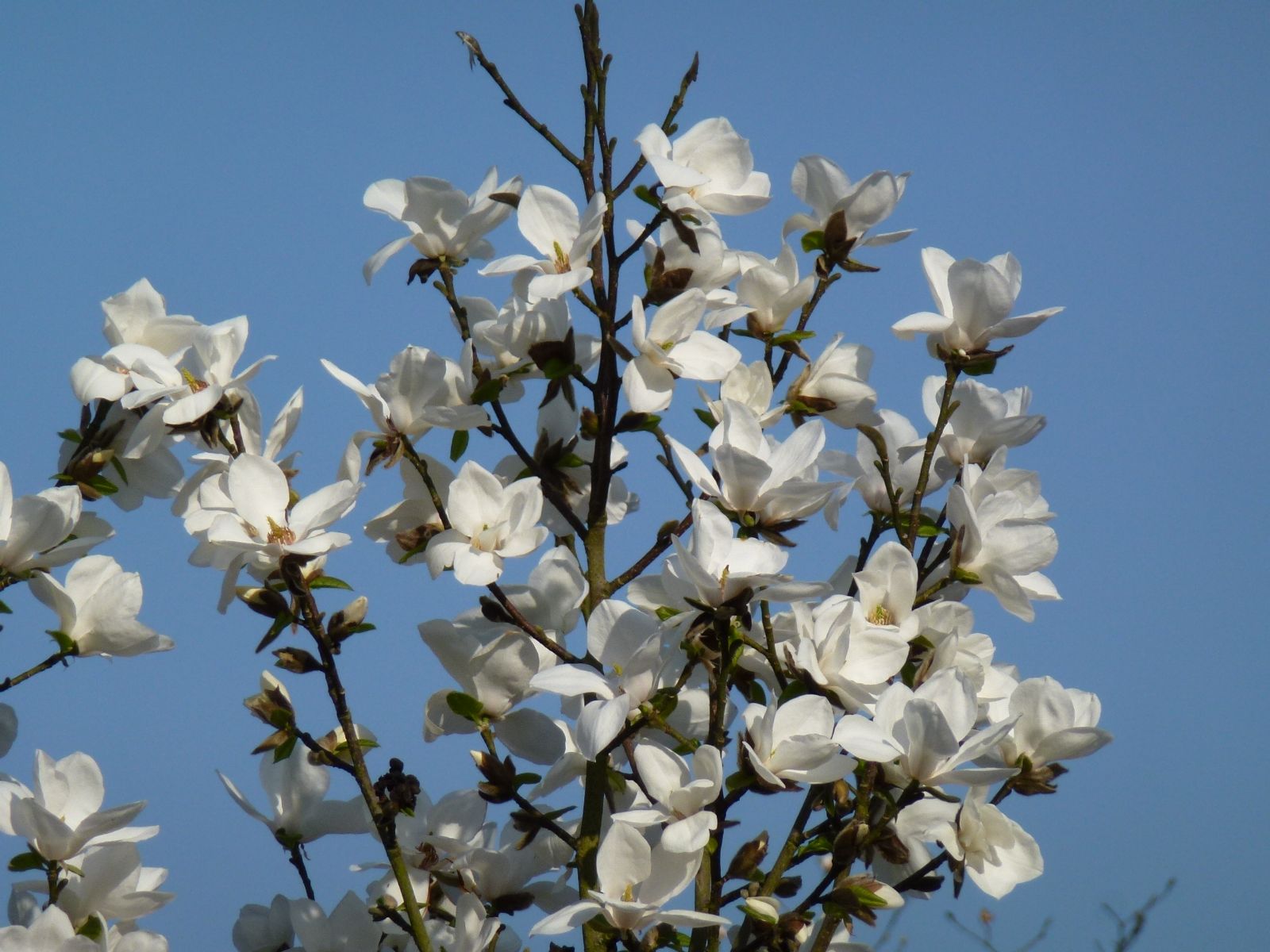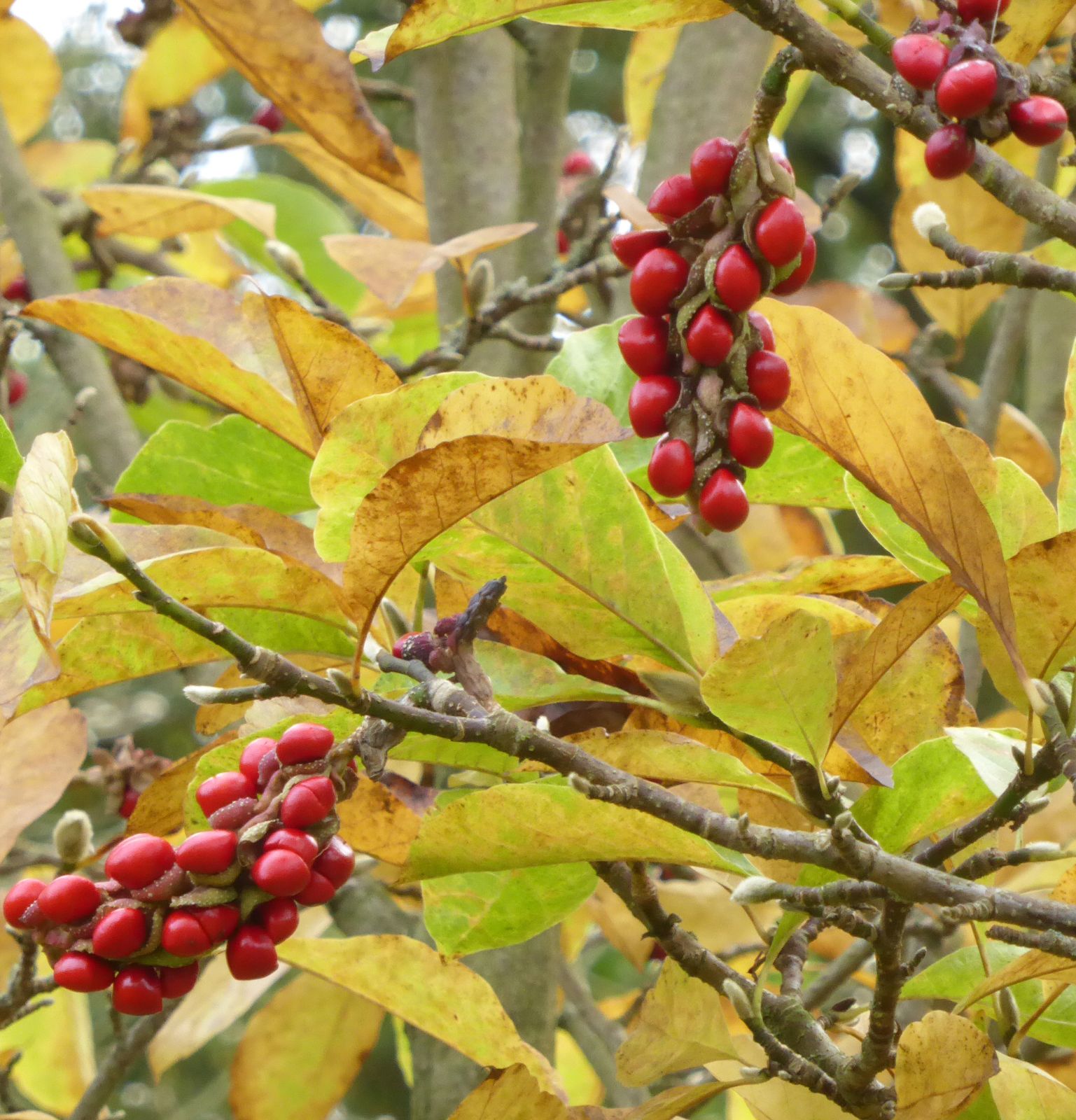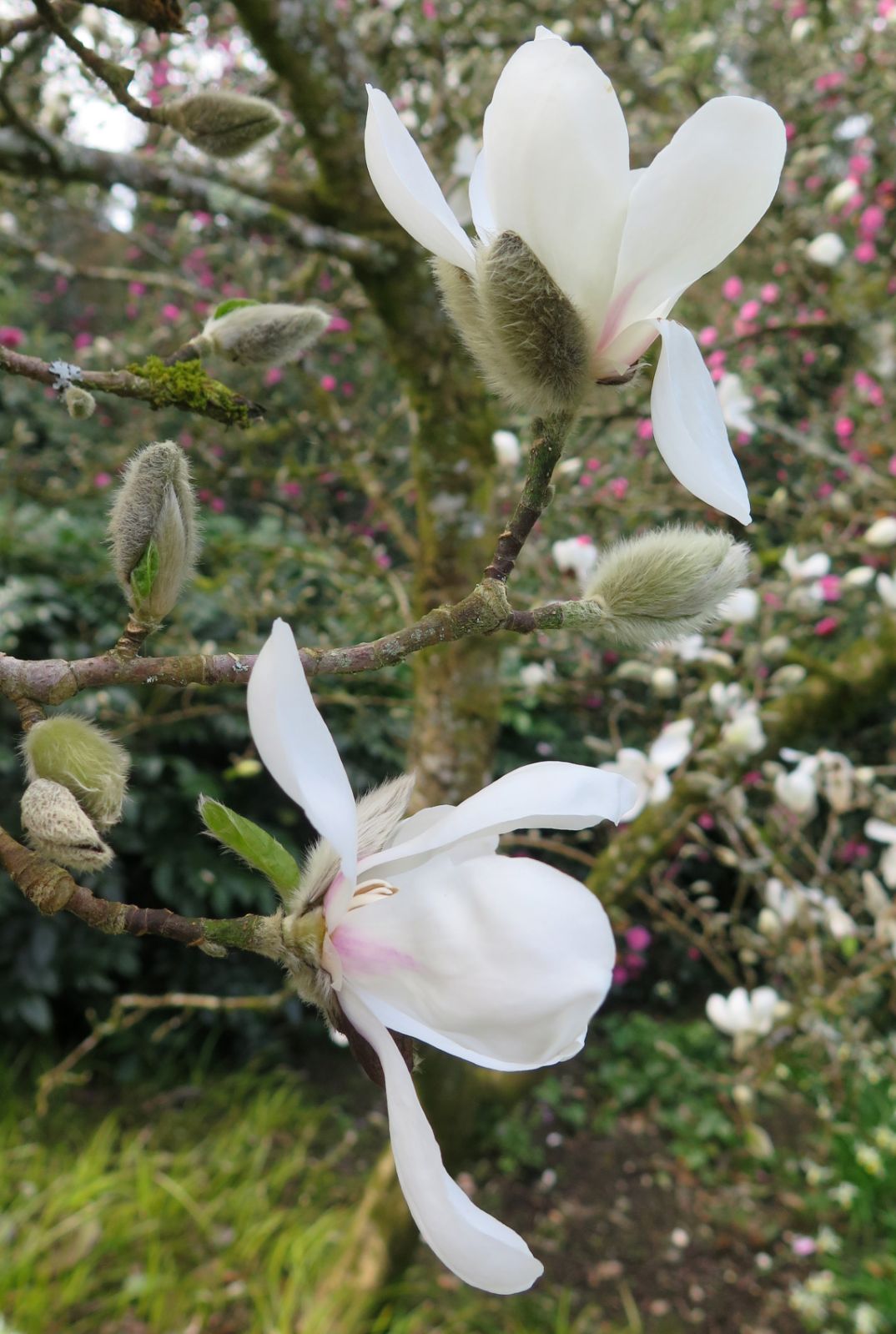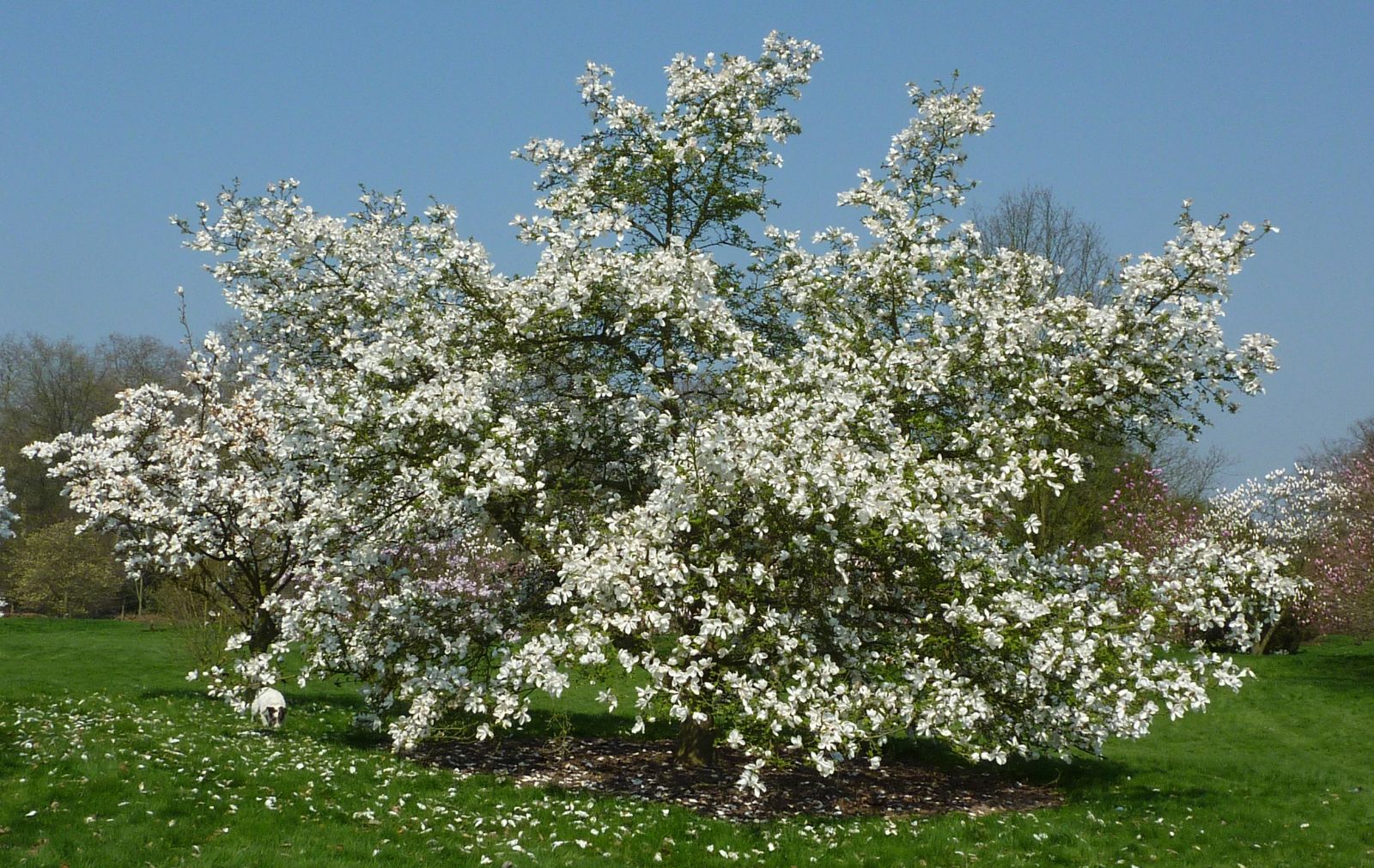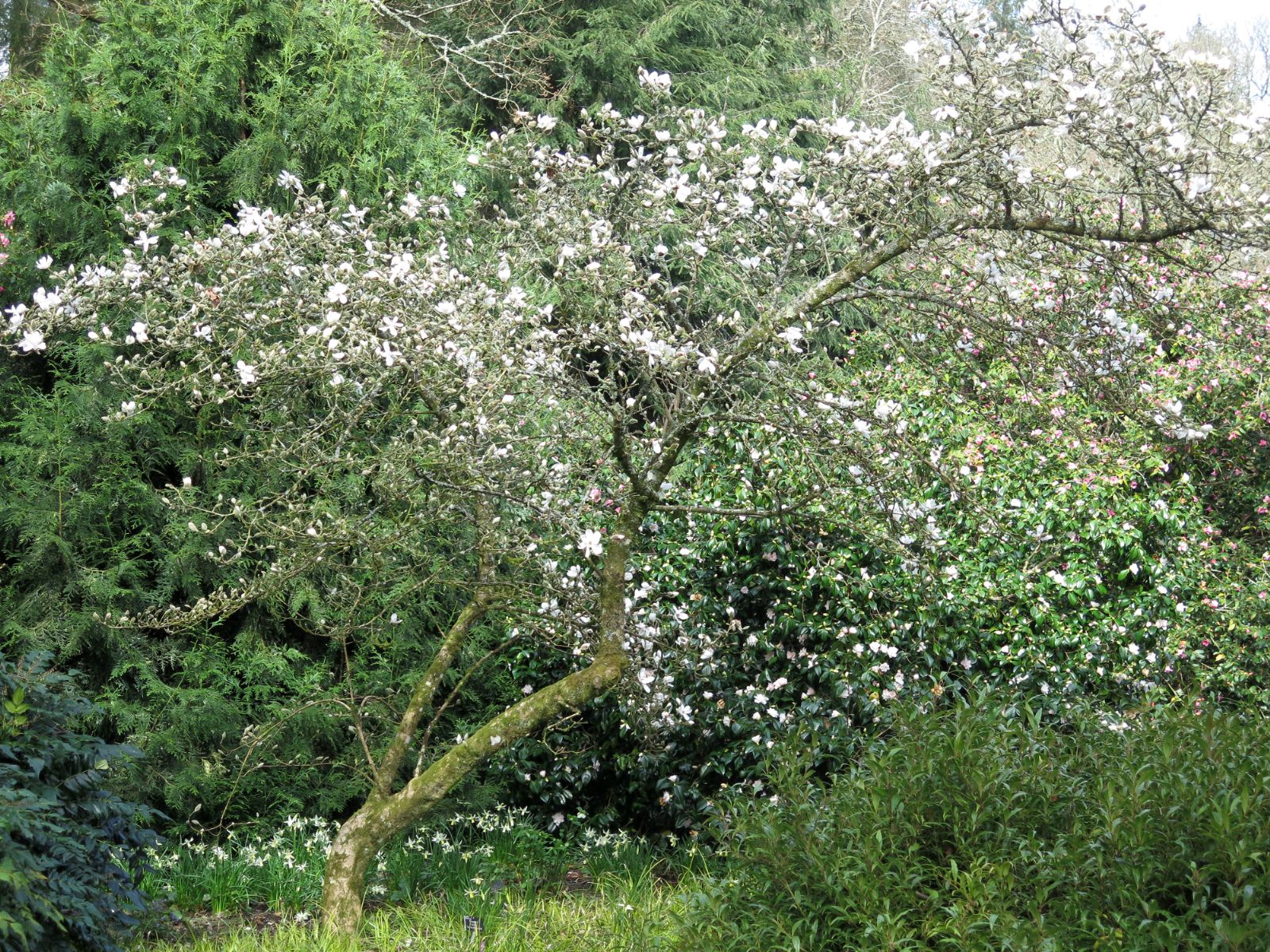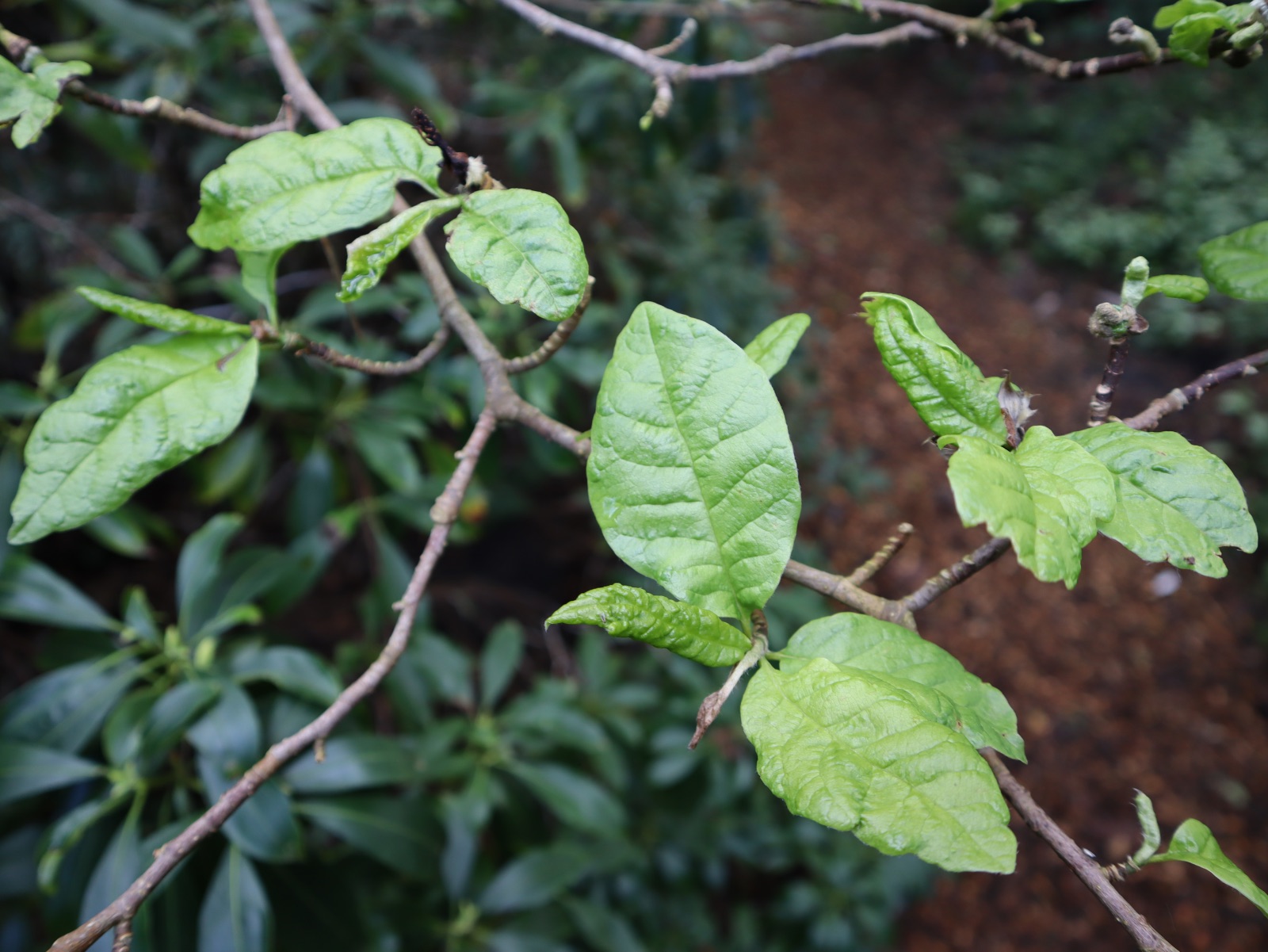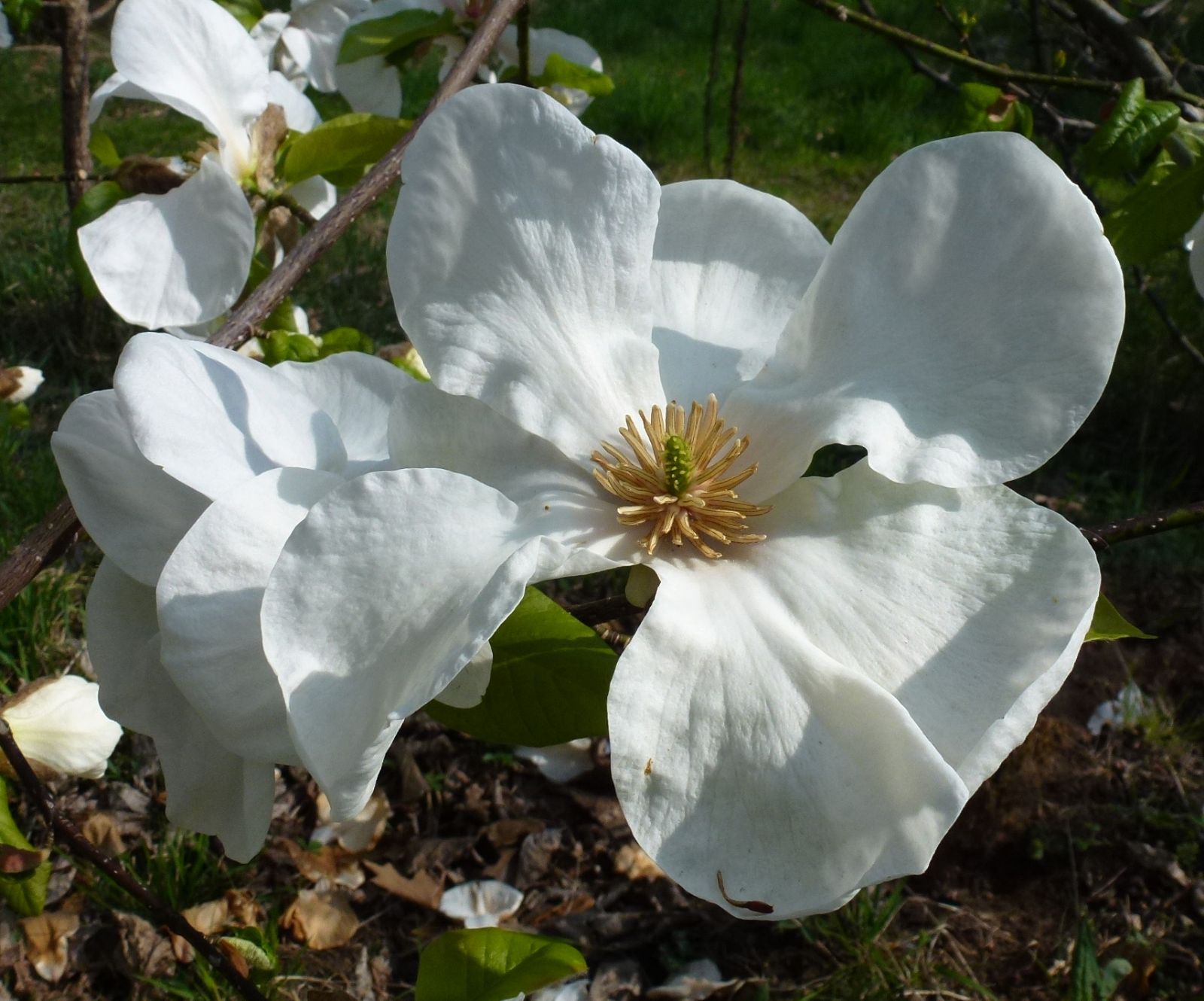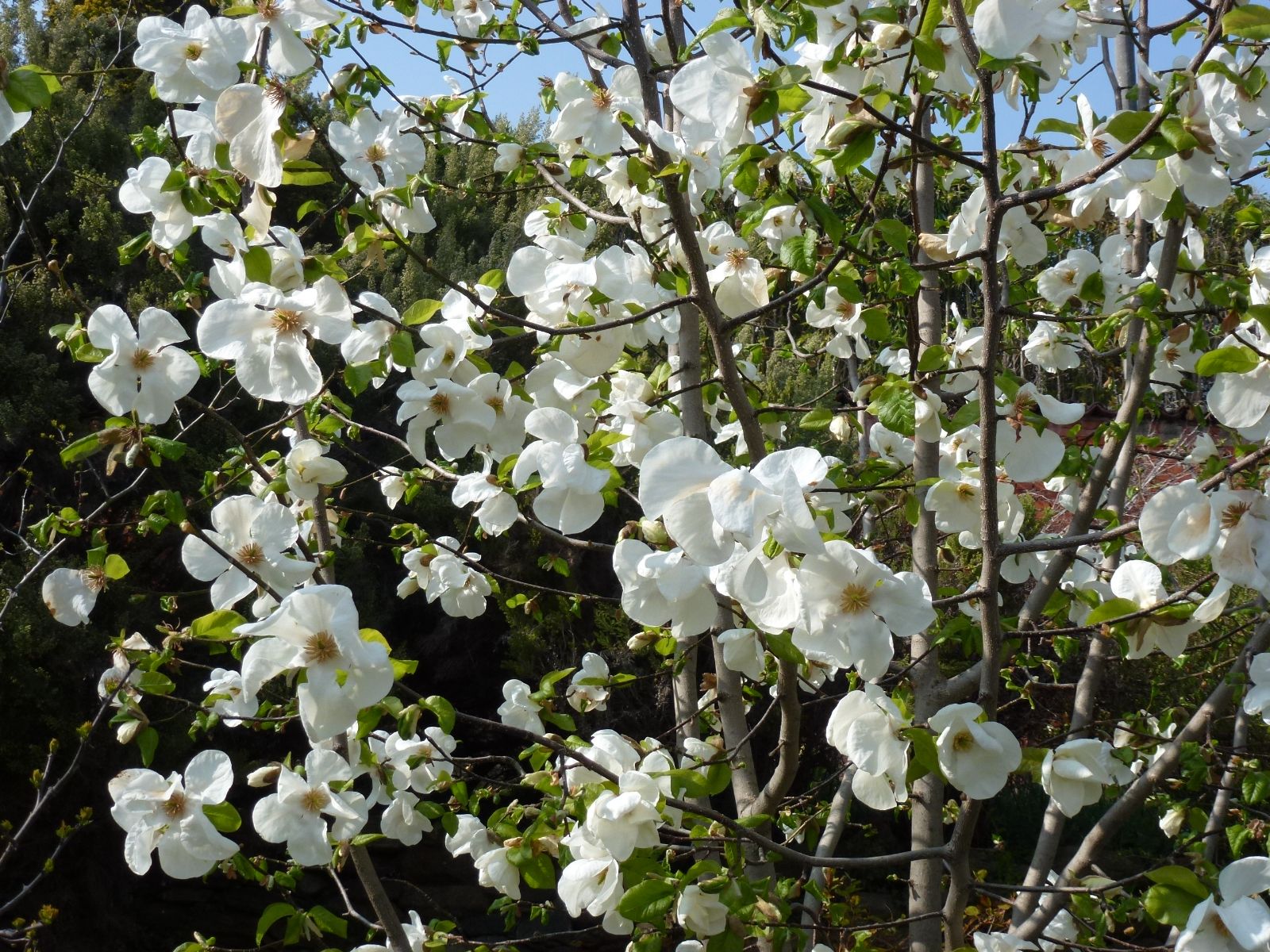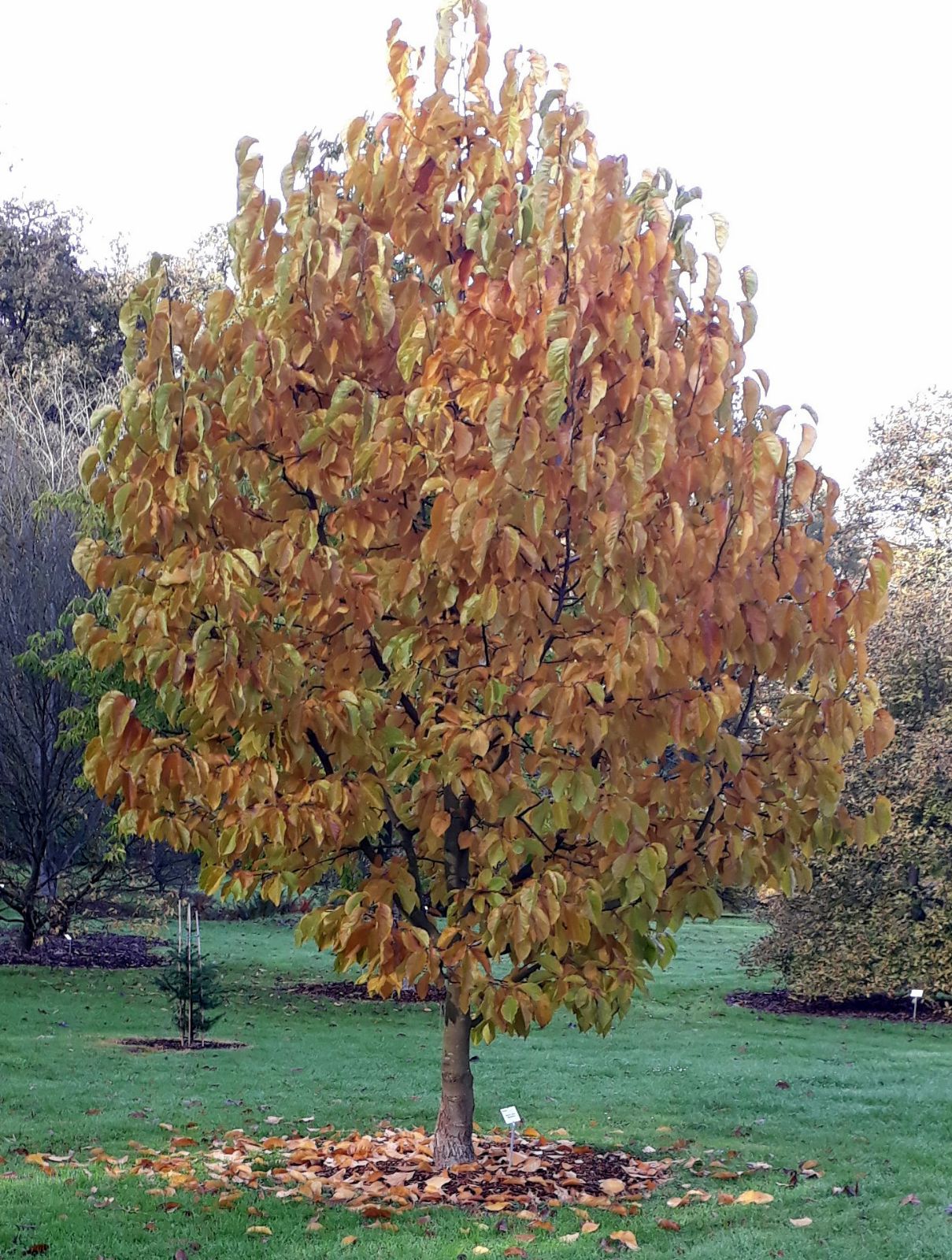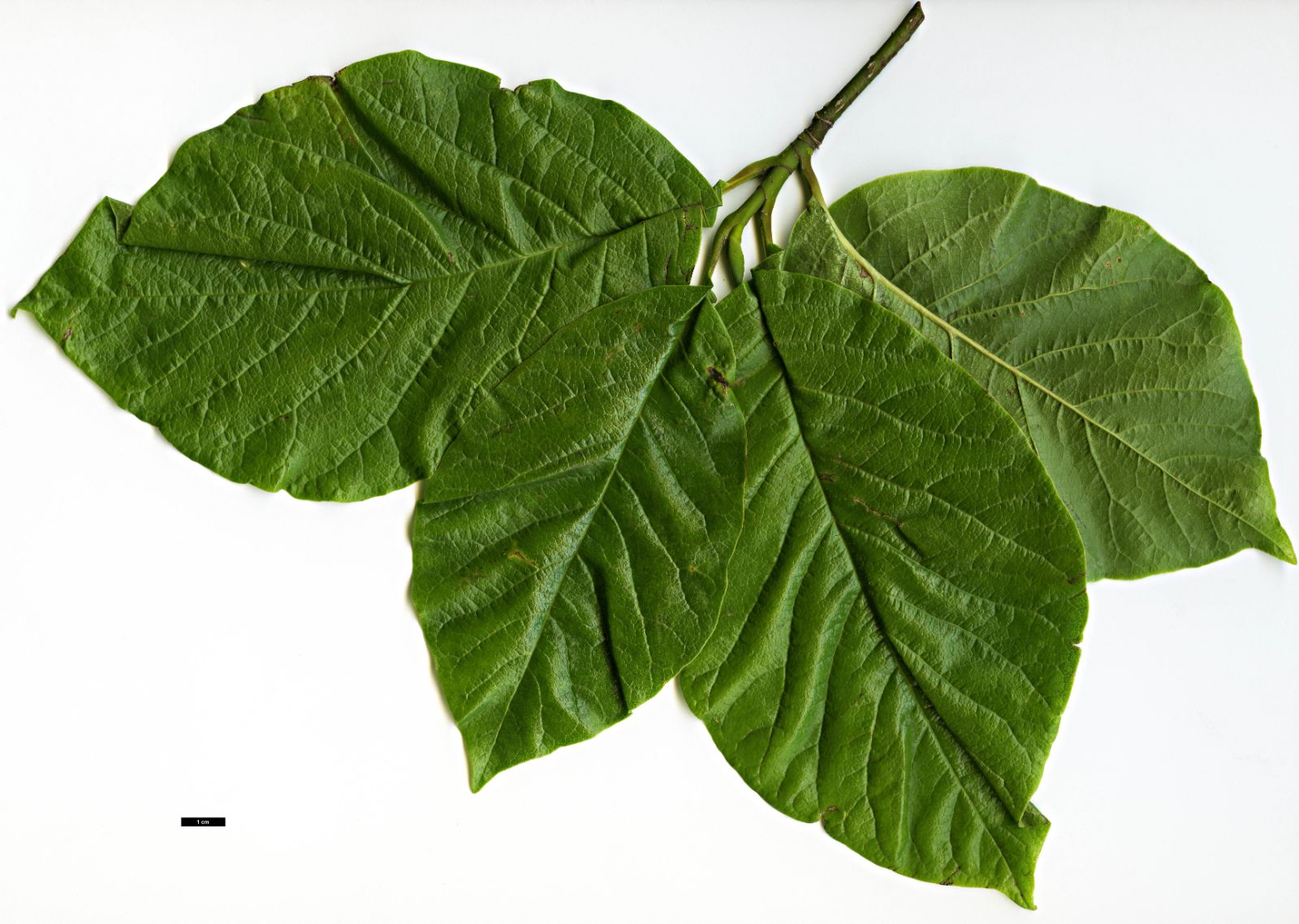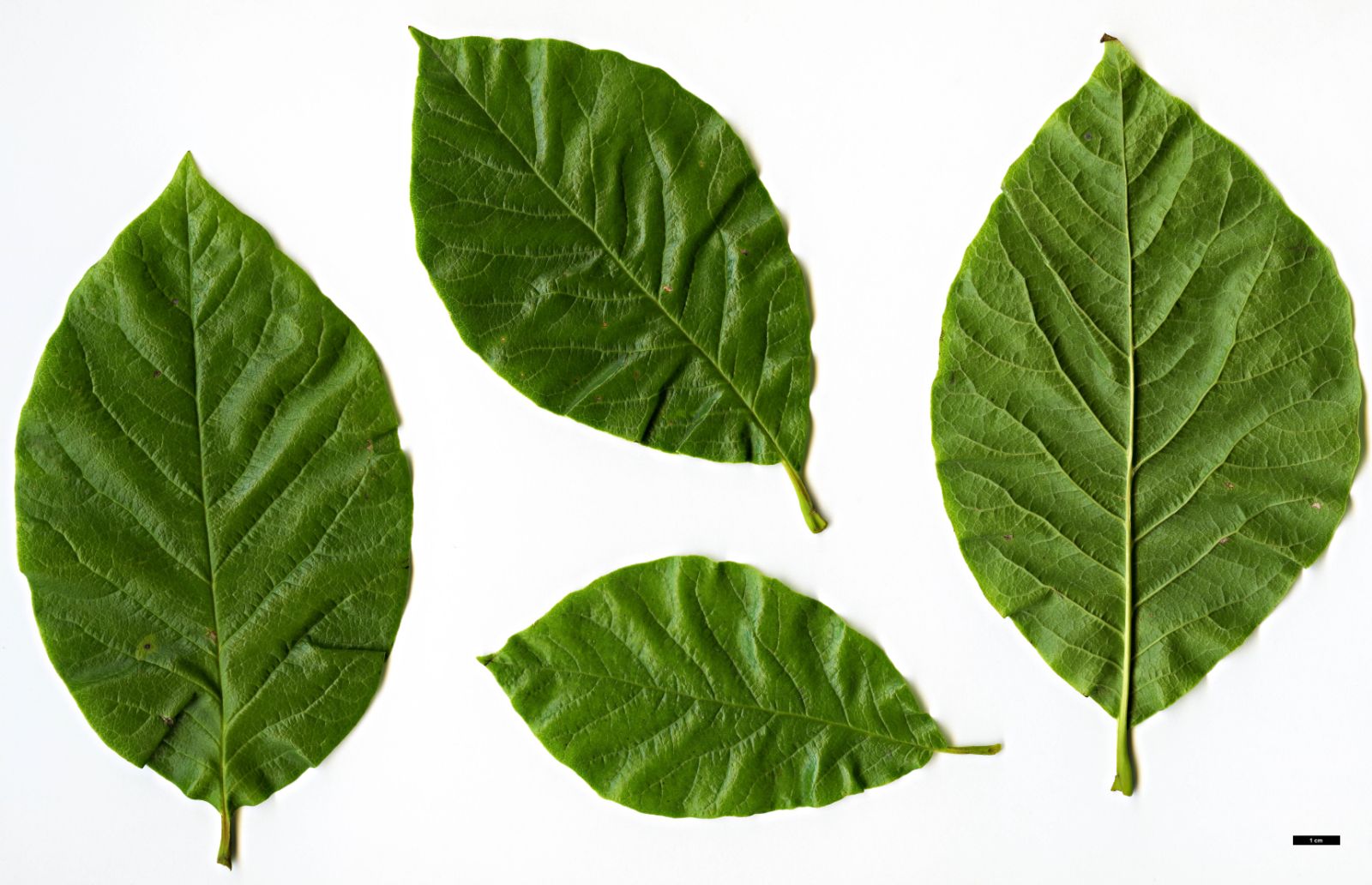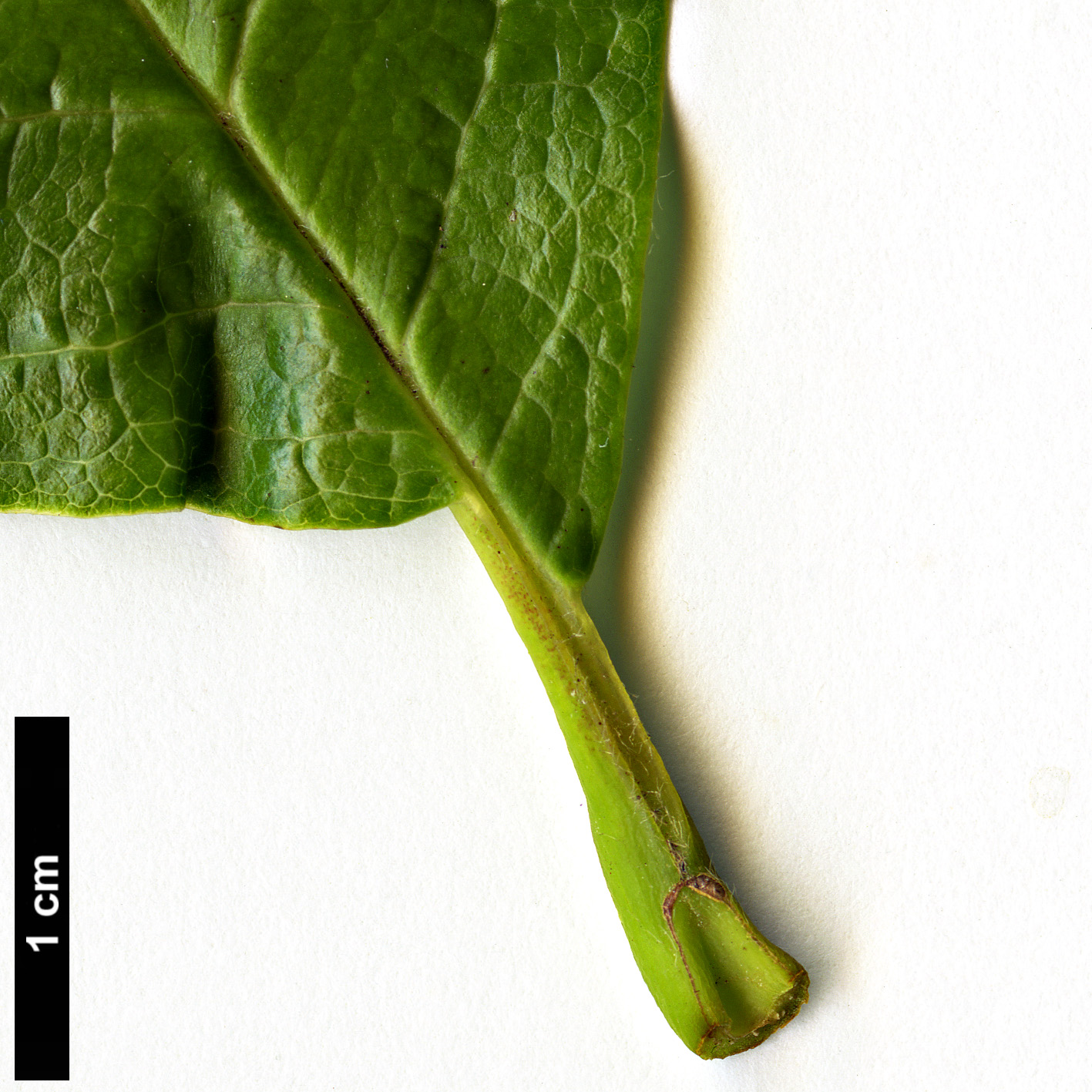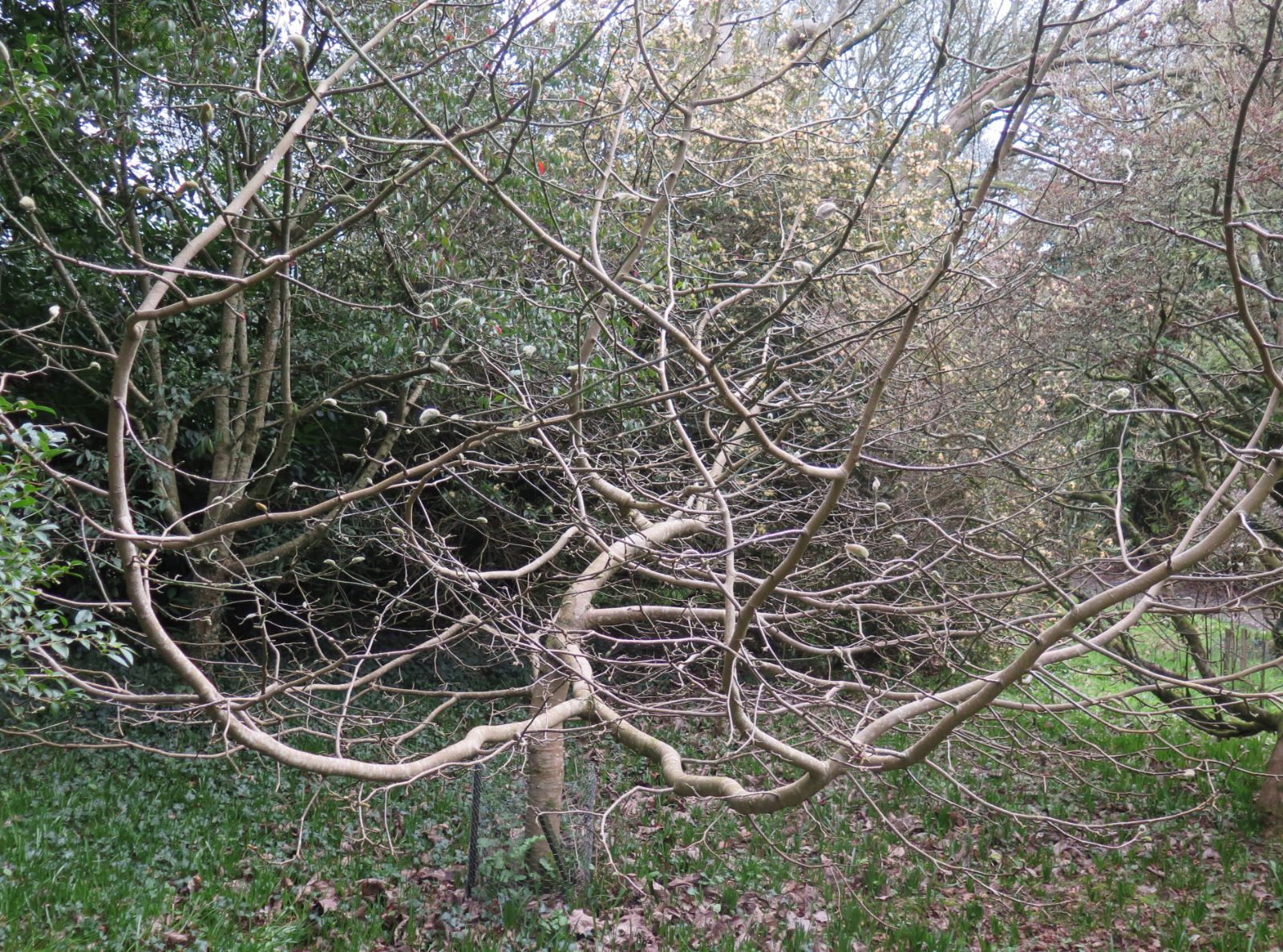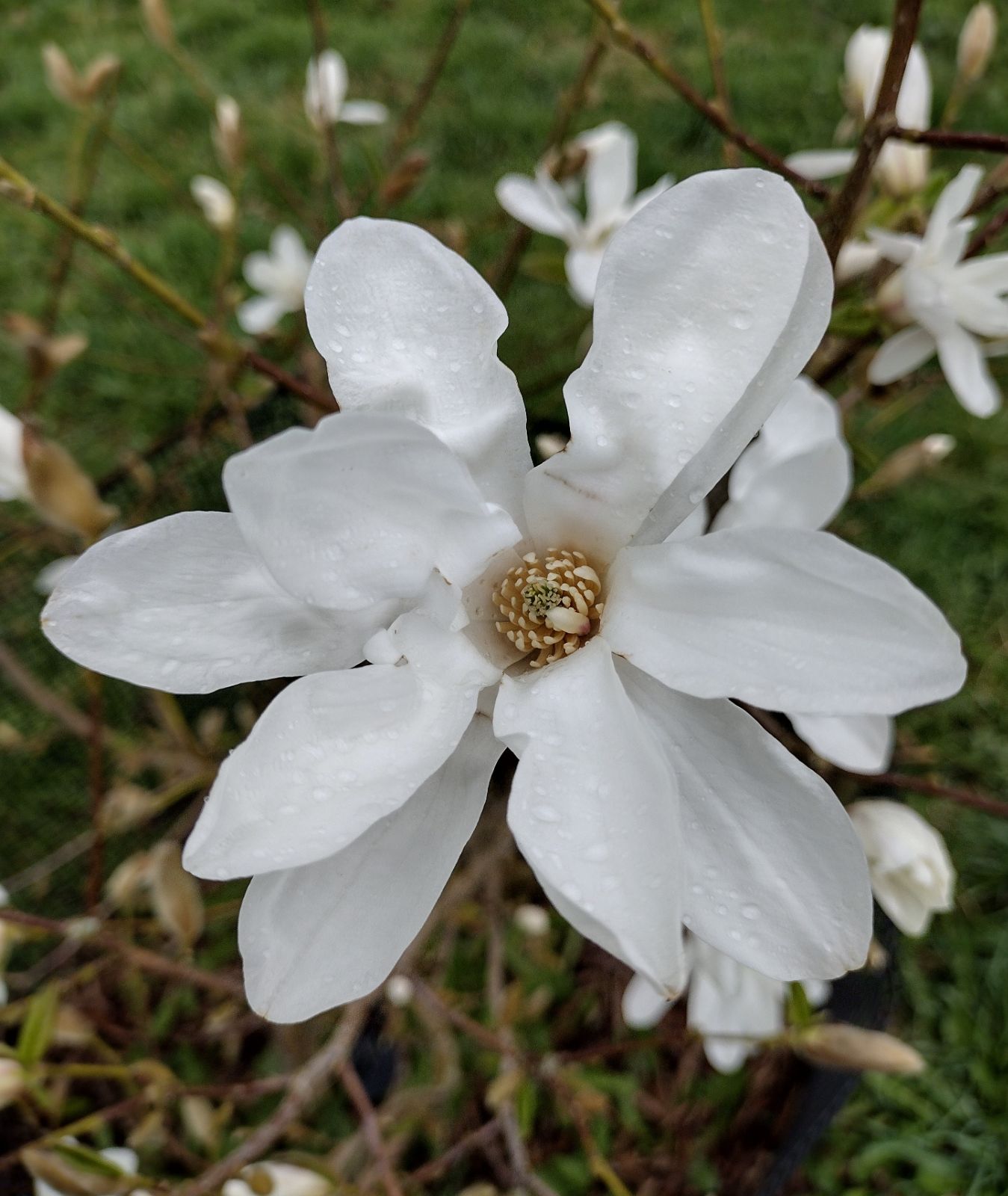Magnolia kobus
Sponsor
Kindly sponsored by
The Roy Overland Charitable Trust

Credits
Julian Sutton (2022)
Recommended citation
Sutton, J. (2022), 'Magnolia kobus' from the website Trees and Shrubs Online (treesandshrubsonline.
Genus
- Magnolia
- Section Yulania
Common Names
- Kobus Magnolia
- Northern Japanese Magnolia
- Kobushi
Synonyms
- Magnolia kobushi Mayr
- Magnolia praecocissima Koidz.
- Yulania kobus (DC) Spach
Infraspecifics
Other taxa in genus
- Magnolia acuminata
- Magnolia × alba
- Magnolia amabilis
- Magnolia amoena
- Magnolia aromatica
- Magnolia biondii
- Magnolia × brooklynensis
- Magnolia campbellii
- Magnolia cathcartii
- Magnolia cavaleriei
- Magnolia caveana
- Magnolia champaca
- Magnolia changhungtana
- Magnolia chapensis
- Magnolia compressa
- Magnolia conifera
- Magnolia Cultivars A
- Magnolia Cultivars B
- Magnolia Cultivars C
- Magnolia Cultivars D
- Magnolia Cultivars E
- Magnolia Cultivars F
- Magnolia Cultivars G
- Magnolia Cultivars H–I
- Magnolia Cultivars J
- Magnolia Cultivars K
- Magnolia Cultivars L
- Magnolia Cultivars M
- Magnolia Cultivars N–O
- Magnolia Cultivars P
- Magnolia Cultivars Q–R
- Magnolia Cultivars S
- Magnolia Cultivars T
- Magnolia Cultivars U–V
- Magnolia Cultivars W–Z
- Magnolia cylindrica
- Magnolia dandyi
- Magnolia dawsoniana
- Magnolia de Vos and Kosar hybrids
- Magnolia decidua
- Magnolia delavayi
- Magnolia denudata
- Magnolia doltsopa
- Magnolia duclouxii
- Magnolia ernestii
- Magnolia figo
- Magnolia floribunda
- Magnolia × foggii
- Magnolia fordiana
- Magnolia foveolata
- Magnolia fraseri
- Magnolia fulva
- Magnolia globosa
- Magnolia × gotoburgensis
- Magnolia grandiflora
- Magnolia grandis
- Magnolia Gresham hybrids
- Magnolia guangdongensis
- Magnolia hookeri
- Magnolia insignis
- Magnolia Jury hybrids
- Magnolia × kewensis
- Magnolia kwangtungensis
- Magnolia laevifolia
- Magnolia lanuginosa
- Magnolia leveilleana
- Magnolia liliiflora
- Magnolia × loebneri
- Magnolia lotungensis
- Magnolia macclurei
- Magnolia macrophylla
- Magnolia martini
- Magnolia maudiae
- Magnolia nitida
- Magnolia obovata
- Magnolia officinalis
- Magnolia opipara
- Magnolia × proctoriana
- Magnolia × pruhoniciana
- Magnolia rostrata
- Magnolia salicifolia
- Magnolia sapaensis
- Magnolia sargentiana
- Magnolia sieboldii
- Magnolia sinensis
- Magnolia sinica
- Magnolia sinostellata
- Magnolia × soulangeana
- Magnolia sprengeri
- Magnolia stellata
- Magnolia tamaulipana
- Magnolia × thomsoniana
- Magnolia tripetala
- Magnolia × veitchii
- Magnolia virginiana
- Magnolia × wieseneri
- Magnolia wilsonii
- Magnolia xinganensis
- Magnolia yunnanensis
- Magnolia yuyuanensis
- Magnolia zenii
Deciduous tree to 20 m, often multistemmed and widely branching. Bark silvery or brownish-grey, warty, ridged on old trunks. Branchlets yellowish green at first, purple later, with lenticels, usually glabrous; usually turpentine-scented when crushed. Terminal winter buds with long, dense, silvery or yellowish hairs. Leaf blade obovate to oblanceolate, (3.2–)4.5–14.5(–16.5) × (2.5–)4–8.3(–9.5) cm; lower surface pale green, glabrous or with scattered long hairs on the major veins; upper surface dark green, glabrous; base attenuate to cuneate, often oblique; apex usually acute, shortly acuminate, occasionally rounded; margins wavy. Petiole yellowish-green, (0.1–)1–1.5(–3) cm, grooved or narrowly winged on the upper surface above the stipular scar. Flowers emerging before the leaves, terminal, fragrant, held more or less horizontally; pedicels pubescent. Outer 3 tepals small and sepaloid, persistent, (0.6–)1.5–3.5(–4) × (0.2–)0.3–0.5(–1) cm. greenish- or brownish-white; inner tepals usually 6, larger and petaloid, (5–)6–7(–9.8) × (1.3–)2–3.5(–4.2) cm, white, sometimes flushed pink at base beneath. Stamens pinkish or purplish at base. Gynoecium 1–1.5 cm, cylindric, green, styles whitish. Fruit held more or less horizontally, cylindric, sometimes curved, 3.5–11 cm, maturing reddish. Seeds ~9 mm long, usually slightly wider, red outside. Flowering March–April (UK). Diploid 2n=38. (Spongberg 1976).
Distribution Japan Hokkaido, Honshu, Kyushu, Shikoku South Korea
Habitat Upland areas
USDA Hardiness Zone 5-8
RHS Hardiness Rating H6
Conservation status Data deficient (DD)
This superbly hardy Japanese species is usually seen in gardens as a small to medium tree, initially pyramidal in outline but sometimes becoming broad and spreading with age. The white flowers are borne on naked twigs, often late enough in the season to avoid frost damage.
Two other Japanese species have strong similarities to M. kobus and are closely related. M. salicifolia has very similar flowers but narrower, rather willow-like leaves, usually glaucous beneath. M. stellata has more numerous, narrower tepals. The crushed leaves and branchlets of M. kobus share something of the anise scent of M. salicifolia, but much less strongly.
De Candolle’s specific epithet kobus derives from the Japanese vernacular name kobushi which is also a word for ‘fist’; the connection is perhaps in the look of the opening flower buds. There has been an extremely complex debate – baffling to all but nomenclature specialists – around its validity. This centres around designation of type specimens and the listing of what would now appear outlandish synonyms in some early 19th century publications, and has been resolved in practical terms only by conserving the name. For exhaustive detail see Nooteboom (1994).
Across its wide natural range distribution it varies considerably in habit, from a large multi-stemmed shrub to an erect tree. Growth rates vary considerably, up to 25 cm per year on vigorous young trees. Robust examples from the eastern side of Hokkaido and northern Honshu, typically with larger leaves and flowers, have sometimes been called M. kobus var. borealis Sarg.; but following Johnstone (1955) and Spongberg (1976), most recent workers have rejected this view on the grounds that the distinction is not clear cut. Furthermore, molecular data suggest that while there are distinct northern and southern lineages, these do not equate to var. borealis and var. kobus (Tamaki et al. 2019).
Flowers open before the leaves, from distinctively downy buds. The sepaloid outer tepals fall early, while the 6 inner tepals tend to remain erect, giving a vase shaped flower. They have a light but, at least in wild plants, quite variable fragrance. This variation, especially evident in central Honshu, may simply be the result of little natural selection on fragrance, visual cues being more important in attracting pollinators (Azuma, Toyota & Asakawa 2001). The flowers are frost sensitive: because the first flush of flower also happens to be the main flush, a frost of as little as –3oC can have a disastrous effect, with the tepals becoming completely browned. This species seems very variable in its time taken to flower, with anything from 7 to 30 years from seed being quoted; vegetatively propagated material, however, flowers within 10 years of propagation. The fruiting cones are not particularly attractive. They are green initially, eventually turning russet brown, and appear distorted in shape, revealing bright red seed.
The wood is soft, close-grained, and a light yellow in colour. In Japan it has been used for making matches as well as kitchen utensils. The bark was used in medicinal preparations by the Ainu as a cold cure (Batchelor & Miyabe 1893)
Magnolia kobus is much cultivated across Japan, particularly along roads, where it seems tolerant of vehicle emissions (Tamaki et al. 2019); it is also widely planted in mainland Korea. The usual claim is that its first introduction to Europe was around 1875–9 by Charles Maries, an English plant collector working for the Veitch nursery (Gardiner 2000). However, it seems to have reached Count Wodzicki’s arboretum at Niedzwiedz, S Poland, as early as 1820 (Anisko & Czekalski 1991). Good specimens are now found across the British Isles; extremes of height and girth include a shapely upright tree of 19 m × 203 cm (2021) in Windsor Great Park, and an ‘enormous bush’ of 15 m × 306 cm (2016) at Bodnant, N Wales (The Tree Register 2021). Its hardiness makes it especially popular in colder parts of Europe, where it grows in coastal Sweden and Norway (Gothenburg Botanical Garden 2021; NTNU University Museum 2021). It is one of the most successful magnolias in southern Finland (Arboretum Mustila 2021), while Anisko & Czekalski (1991) consider it second only to M. acuminata in hardiness in Poland, where it is popular. Considerable variation in hardiness is revealed in these marginal areas, not surprising in a species with a wide north-south distribution. A tree at Mustila, Finland has survived even the coldest winters for over 50 years and has been distributed vegetatively under the unregistered names ‘Mustila’ and ‘Vanha Rouva’ (Arboretum Mustila 2021). There is scope for selection of hardier forms from wild populations at extremes of the range.
It was first introduced into North America in 1861–2, probably from Honshu, by medic-turned-international-trader George Hall of Rhode Island, who passed it into the nursery trade. Seed of more northerly Hokkaido provenance was sent to the Arnold Arboretum in 1876 by William Clark of the Massachusetts Agricultural College. Usually rated as hardy to USDA zone 5 (sometimes even to zone 4, with reports of surviving temperatures as low as –34oC) it is commonly grown in much of the United States, away from very cold north-central and dry regions, as well as in southern Canada.
It is easily grown on most soils, except very dry ones, and is lime tolerant. Its adaptability makes it a popular rootstock for other magnolias.
A few interesting polyploids are known. In the early 1950s, the cytogeneticist Janaki Ammal was working with colchicine-induced polyploids of various woody plant genera, including Magnolia, for the Royal Horticultural Society at Wisley. A number of her original polyploid M. kobus seedlings still grow at Wisley, primarily on Battleston Hill. They include ‘Norman Gould’, ‘Janaki Ammal’ and ‘Wisley Star’ (see below). All are vigorous, multistemmed small trees in excess of 6 × 6 m, with abundant flowers opening successively over several weeks; they share a crinkled leaf texture. An attractive triploid of Japanese origin, which has attracted a multiplicity of names, is discussed below under ‘Pseudokobus’.
There seem to be no barriers to breeding between M. kobus and M. stellata; the hybrid M. × loebneri is well known from garden crosses, but also occurs where M. kobus is introduced into the wild range of M. stellata (Tamaki et al. 2021). It also hybridizes with M. salicifolia.
'Janaki Ammal'
One of the Wisley polyploids, named for their raiser. Less well known than ‘Norman Gould’ (see below), from which it differs only in the tepals being narrower and more crinkled, and in the flowers opening more fully. Both are singled out as worthwhile cultivars by Philippe de Spoelberch (pers. comm. 2021).
'Maráczy'
Synonyms / alternative names
Magnolia kobus ISIS
A columnar form; very narrow in youth, predicted to reach 5–10 × 2–3 m at maturity; bronze young growth. Hungarian origin before 2018; European Plant Breeders’ Rights (Genesis 2022; van den Berk Nurseries 2022).
'Norman Gould'
Pure white, cup shaped flower with 8–9 tepals. Tepals broad, 10 cm long, with a hint of pink at the base. Abundant flowers over a long season, and within only a few years when raised from cuttings. One of the Wisley polyploids, named for a long-serving Royal Horticultural Society botanist.
'Pseudokobus'
Synonyms / alternative names
Magnolia pseudokobus Abe & Sakawa
Magnolia kobus f. pseudokobus Abe & Sakawa
Magnolia kobus 'Kubushimodoki'
Flowers larger, to 18 cm across and tending to face outwards as they age. Inner tepals about 6, white, sometimes with a touch of pink at the base later, broad (to 6.5 cm wide), rather floppy. Slow growing but very impressive in flower – ‘M. kobus on steroids’ (Ejder & Figlar 2021).
This is the plant first described in 1954 as M. pseudokobus, from a low, straggling, layering shrub in a Cryptomeria japonica plantation on Shikoku, where it is now extinct; M. kobus is not native to the island, but is grown there in gardens. Cytological and molecular data together confirm it as a triploid (2n=57) unhybridized M. kobus (Sakaguchi et al. 2020 and references therein). It is thought most likely to have arisen as a chance polyploid seed in a Shikoku garden, carried by a bird to the plantation. It is generally sterile, its fruits falling early, although a few weak seedlings have been raised in cultivation (Ejder & Figlar 2021). While Sakaguchi et al. (2020) chose to treat it as a botanical forma, we agree with Ejder & Figlar (2021) in concluding that a cultivar is most appropriate, this being a unique genetic individual rather than a population or recurring form. Various versions and spellings of the Japanese vernacular name Kobushimodoki (meaning much the same as ‘Pseudokobus’) have been used quite widely as its cultivar name (e.g. Hatch (2015). However, the ICNCP requires that when a species is reclassified as a cultivar, its epithet should be retained as the cultivar name (Brickell et al. 2004), so we follow both Lobdell (2021) and Ejder & Figlar (2021) in using the name ‘Pseudokobus’.
Well established as young trees in Europe, where upright specimens seem to be the norm, Ejder & Figlar (2021) wholeheartedly recommend this genetic oddity for its beauty and ease of cultivation. Flagged by Williams, Gardiner & Gallagher (2016) as an up-and-coming cultivar, Philippe de Spoelberch also commends its large flowers, noting that for him in Belgium it flowers late, with the leaves (pers. comm. 2021).
'Wisley Star'
Synonyms / alternative names
'Wisley Stardust'
Another of the Wisley polyploids. Up to 15 strap-shaped, slightly crinkled tepals which open wide like a star.

